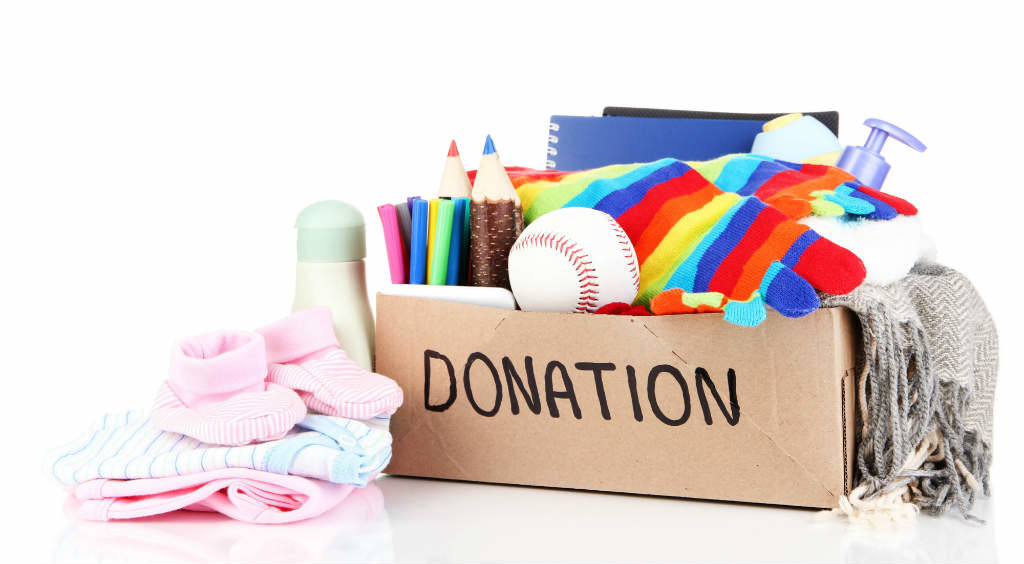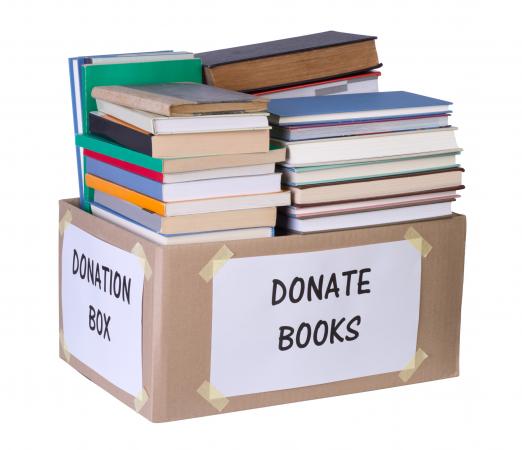When I help clients decide what items to cull, I often sing a ditty to the tune of ‘Let It Snow! Let It Snow! Let It Snow!

Oh, the house is getting cluttered
And it makes me want to shudder
And since it’s on overflow
I’ll let it go, let it go, let it go.
Doesn’t sound professional? Well, it helps clients to have fun when making tough decisions about letting go of items that trigger memories. As professional organizers, we help our clients reframe the way they look at their items so they can become clear on what they want to keep and what they want to let go.
Marie Kondo’s books and Tidying Up Netflix series have inspired people to declutter and organize their homes. One of KonMari’s catch phrases is ‘DOES IT SPARK JOY?’ I like that concept because it implies joy ignites energy. Of course, we need to keep items that don’t necessarily spark joy (can you say ‘income tax returns?) so let’s examine some other questions to ask yourself:
Sometimes even these questions aren’t enough to make clear, confident decisions. We may need to delve deeper to examine the ”keep vs. don’t keep” tug of war going on inside us. Here are some other reframing questions to ask yourself:

If when you’re culling items and feel stuck, feel free to sing my take on ‘Let It Go’ or make up your own words to Frozen’s version. Keep the process fun as you strengthen your decision-making and letting-go muscles!

In between holidays, most of us aren’t working…a great use of some of that free time is to get a little organizational housekeeping out of the way. Here are some great, easy steps you can do to start 2019 off on the right foot!
December 31 is the deadline for getting all of your donations together, whether it be financial or stuff. With the new tax laws in place, try tracking donations using It’s Deductible to easily track what has been donated. If it is stuff you want to donate don’t wait until the 31st. I have seen donation centers unable to accept items toward the very end of the year.
Do you look at your holiday cards every season and have no idea who you need to send them to?
This is the time to update your 2019 Holiday Card List! Document who you sent cards to and who you received them from. Keep a record so that you can just pull out your list next year and start addressing. You can do that on a spreadsheet or if you really want to be ahead of the game, you can make a document for your labels so that all you have to do next year is “edit” and ‘print”, easy peasy.
Do you find old gift cards all over your house? Gather your gift cards together in one place so that you can easily find them. If you have a lot, put them in an envelope and label it with the cards you have. This will help save you from letting them expire. Use them before the restaurants that you have them for go out of business (this happened to me this year). I made a reservation and the next day they closed, annoying.
Put your Christmas decorations away properly.
Give away any decorations that you haven’t used in a while. Decorating time will be more pleasant next year if you are only dealing with pieces you really love.
Store the things you love in nice containers that reflect their value to you, There are great containers for wrapping paper, ribbons, wreaths, ornaments, dishware, glassware. Check out The Container Store, Amazon and Frontgate for a wide selection, but don’t wait too long they sell out.
Paper Clear Out
One thing my clients do (actually I do it for them) is to pull all of this year’s bills, receipts and other documents out of their files, we separate the tax documents for the accountant and the most of others get tossed/shredded/filed. The result: clean files ready for the New year to begin and all your papers are gathered for your accountant…yes!
Thoughts for the New Year
Take some time for yourself to review this year’s events (use the photos on your phone to quickly do this).
What was great about this year?
What would have made it a better year?
How can you make the New Year better?
And finally….For ribbons, bow, cards and other miscellaneous items try the Organize It All Christmas.
For your special ornaments try Snapware Snap ‘N Stack Square Layer Seasonal Ornament Storage Container
For your LED lights these are great and they stack very well Christmas Light Storage Wheels with Bag
For your Christmas china and wine glasses we suggest Household Essentials Dinner Plate Holiday Storage Chest
Wine Glasses
Saucers
Dessert Plates and Small Bowls
Spring is finally springing up all around us, daffodils are blooming and the forsythia is blossoming into that amazing yellow color.
Easter and Passover are a time of new beginnings. April is also the month we celebrate the earth. Earth Day began in Philadelphia in 1970 (Belmont Plateau anyone?). In the organizing and productivity industry, we consider every day Earth Day! When we work with clients on a home organizing project, we teach our clients about recycling. There is so much that we recycle to help preserve our earth. Here are some of the resources that we use to locate the most appropriate place to donate and recycle in our area:
However currently there is an abundance of stuff that people are getting rid of, they are very picky, so what you try to consign has to be in very good condition.
Depending on what you have there is usually an auction house or specialty sale that items can go to. When you sell at auction houses and consignment shops there is a fee usually between 30% and 50%.
 While I was going through items in a kitchen pantry with one of my clients, she commented on how easy it was to organize in the kitchen. When I asked why, she said that if food is expired it takes the decision out of her hands about whether to get rid of it or not. However, with the rest of the stuff in the home, she has to make the decision whether it has ‘expired’ or not. Deciding on the life cycle of your belongings is not easy, but when your spaces become too crowded or you can’t find your keys for the third time in one week, it’s time to take action.
While I was going through items in a kitchen pantry with one of my clients, she commented on how easy it was to organize in the kitchen. When I asked why, she said that if food is expired it takes the decision out of her hands about whether to get rid of it or not. However, with the rest of the stuff in the home, she has to make the decision whether it has ‘expired’ or not. Deciding on the life cycle of your belongings is not easy, but when your spaces become too crowded or you can’t find your keys for the third time in one week, it’s time to take action.
The life cycle concept is one way to work through the backlog of the accumulated clutter in the home and as a strategy to constantly weed out stuff. Our stuff has a life cycle that begins with it being most useful, most beautiful and most beloved. Over time our stuff becomes less useful (obsolete technology; items that wear out or break), less beautiful (fashion trends or our tastes change), and less beloved (reminders of past periods in our family’s life that may not be so important).
When you think about all of the items you bring in to your home on a weekly or monthly basis, it boggles the mind. But if you don’t take out as much as you bring in, over time you will begin to feel like your stuff is taking over. If some of your belongings are starting to become CRAP (Clutter that Robs Anyone of Pleasure), it’s time to consider whether those belongings are part of your family’s present and/or future. Keeping items from the past that no value or meaning to the present day leaves less room for additional items (or opportunities) for the future. For example, as your children grow, do you hold on to the toys they used to love, even though they don’t want them anymore?
Finally, if you are keeping items because you think they might be worth a lot of money, there are ways to find out. One way is to look on Ebay. Is anyone selling the item now? Has anyone sold that item in the last two weeks and for how much? Reputable auctioneers are also good resources for evaluating antiques and collectibles. Mass produced goods from 1960 or later have less of a chance to increase in value. But remember, regardless of what items may have been worth in the past; items are only worth what someone is willing to pay for them today.
When your clutter starts to take over your home, reevaluate whether the life cycle of those items is over or not. Someone else may be able to give your unneeded items a whole new life.
Clutter Quote: “Do not spoil what you have by desiring what you have not; remember that what you now have was once among the things you only hoped for.” Epicurus, ancient Greek philosopher
Personal property is “in motion” when there is a need to deal with your movable personal possessions. Items include furnishings, art, antiques, jewelry, and collections — often referred to as “stuff.”
What puts Personal Property in Motion?
• Moving & down-sizing living space
• Selling a local home to move full-time to a vacation home
• Inheriting items when your home is already full
• Deciding to sell a personal collection
• Making a decorating/design change or upgrade
• Getting organized to deal with stuff which has accumulated over the years
• Settling an estate
Suggestions for dealing with emotions when Property is in Motion
• Pictures can help retain the memory of items. Remembering special rooms, spaces, items, and collections through picture albums can help minimize the sense of loss. The pictures, when stored and retrieved electronically, take up no physical space.
• Providing family and friends with the opportunity to acquire items helps in many cases. Passing along sentimental items, in this way, often feels good.
• Recognize it is now normal when family and friends are not interested in many of your furnishings and treasures. Unfortunately, I see this in the majority of people I have worked with in recent years. It helps to not take it personally. When this happens, it is time to sell, donate, or dispose.
Identifying and selling valuable personal property:
• Unfortunately, what you or your family paid for items does not matter to buyers.
• The buyers are generally significantly younger than the sellers. Current market value is driven by what buyers demand.
• When you look to sell valuables directly to a buyer, knowing the current market value is helpful in setting and negotiating a fair price.
• Auctions are an efficient way to deal with significant amounts of personal property in motion efficiently; there are auctions available at every level.
• Higher-end auction houses are an efficient resource in identifying valuable items and their market value; there is generally no charge for this service.
• When selling valuables at auction, it is important to use an auction house which regularly offers similar items. They will have established clientele and attract strong bidders.
Very often, a handful of the most valuable personal property items are worth as much as everything else (you’d hoped to sell) combined. When this happens, half of the financial work in handling the property in motion is complete, simply by identifying and selling the most valuable items.
The process of dealing with property “in motion” brings out emotion. There are memories attached to belongings which connect us to our family, friends, and occasions throughout our lives. While the process may have emotional ups and downs, it feels good when it is complete. I wish you well.
Click on the title above to learn more about the featured author.
 Eventually, the time may come when you feel like the amount of ‘stuff’ you have surrounded yourself with in your home is beginning to have a negative effect on you. For years, those items may have brought you comfort. However, now you may feel claustrophobic in your own personal space. When those feelings begin to occur, and you want to make a change but do not know how, that is usually when it’s time to call a professional organizer.
Eventually, the time may come when you feel like the amount of ‘stuff’ you have surrounded yourself with in your home is beginning to have a negative effect on you. For years, those items may have brought you comfort. However, now you may feel claustrophobic in your own personal space. When those feelings begin to occur, and you want to make a change but do not know how, that is usually when it’s time to call a professional organizer.
The most common description I hear when a potential organizing client calls me is; “I am so overwhelmed.” Upon arriving at the home, I may also hear “I’m so embarrassed,” or “Have you ever seen anything this bad before?” Let me put your mind to rest. As an organizer, I am not there to judge. I am there to help. Professional organizers want to help or we would not be in this profession.
It’s not always easy to clear away things you’ve amassed in your home, whether they are collectibles or household items that just seem to keep accumulating. When sorting through excess things in your home, whether you consider those items clutter or treasured keepsakes, please understand that organizing is a process that takes time. It involves purging, separating, and categorizing every individual piece to achieve the desired results.
Others that are not experiencing the same emotional issues as you when it comes to de-cluttering may have no empathy for your situation. They tell you to “toss it,” or “just throw that stuff out”. Letting go of items can be a daunting task and working with an understanding expert is invaluable whether you wish to accomplish an organized desk, office, closet, room or your entire home.
Your professional organizer will not only facilitate this process, but bring you a sense of calm and understanding as you work through this course of action together. Please don’t misunderstand, it is important for you, as the owner of the possessions, to be a part of this decision making process. Otherwise, you may only be relocating items from one space to another.
Professional organizers can be likened to life coaches, who are defined as somebody who provides advice and support to people who wish to improve their lives, helping them to make decisions, solve problems, and achieve goals. I often hear “I know I should be able to do this on my own, but I can’t seem to make myself do this without you.” Guess what, that’s ok. That comfort, guidance and understanding is much of what we, as professional organizers, bring to you. Of course, we also have the obvious capability to assess and accelerate your project, and then bring it all together with our uncanny sense of space planning to give you a tidy new space.
And isn’t that what you wanted all along; an organized space, free of clutter, that you can find comfort in, and be proud to call your own?